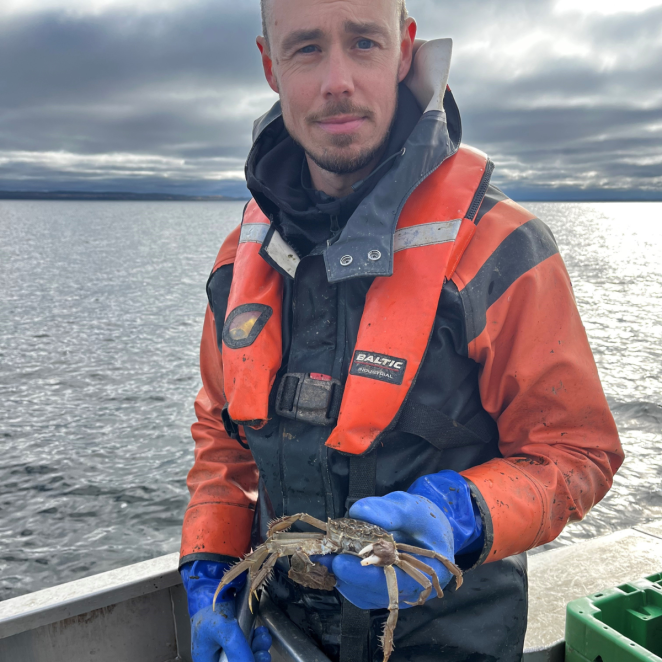A Japanese hybrid of the invasive Chinese mitten crab has established itself in Belgium and may be headed towards Sweden’s Lake Vänern. Researchers at the University of Skövde warn that this hybrid is better adapted to colder waters, increasing the risk of a stable population in Swedish lakes.

Local fisherman Fredrik Fredén has already caught several mitten crabs in Vänern this year. “So far this year, I’ve caught seven mitten crabs. They get caught mostly in the fish traps, not in the crab traps”, says Fredrik. “A few years ago, I heard that colleagues had caught up to 80 crabs, so they are here, but not in large numbers yet. The crabs do not affect the catch at present, but they can get tangled in the nets, so they have to be cut loose.”
Collaboration between local fishermen and the University
Fredrik collaborates with researchers at the University of Skövde by freezing specimens for analysis. Through the Lake Vänern Society of Water Conservation, fishermen receive compensation for each crab caught, which allows more data to be collected and helping track their spread.
“We need to know when and how the migration takes place, especially since adult crabs probably migrate down the Göta River towards the coast. The collaboration with fishermen like Fredrik is invaluable. They are our eyes on the water and help us both monitor and remove the crabs”, says Sonja Leidenberger, biologist at the University of Skövde.

Sonja identifies, measures and photographs the crabs. Each find is registered in the Swedisch Species Observation System and samples are saved for genetic analysis. Sonja also investigates whether there is interbreeding between the Chinese and Japanese mitten crabs and from which population the caught individuals originate.
The work proves that close collaboration is necessary to limit the impact of the invasive species.
